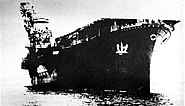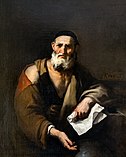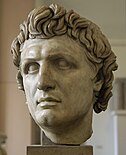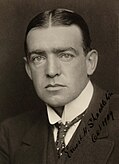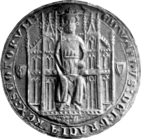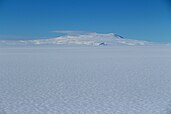User:Gog the Mild/Blurbs
|
||
{{Main page image/TFA|image= |title= }}
In progress[edit]
HMS Beaulieu[edit]
HMS Beaulieu was a 40-gun fifth-rate frigate of the Royal Navy. The ship was laid down in 1790 as a speculative build by the shipwright Henry Adams and purchased by the Royal Navy in June of the same year. Built to the dimensions of a merchant ship, Beaulieu did not have good sailing qualities. The frigate was commissioned in January 1793 by Lord Northesk and sent to serve on the Leeward Islands Station. She participated in the capture of Martinique in February 1794, and then was similarly present at the capture of the island of Saint Lucia in April. The frigate also took part in the initial stages of the invasion of Guadeloupe. Later in the year the ship's crew was beset by yellow fever and much depleted. Beaulieu was sent to serve on the North America Station to allow them to recuperate, returning to the Leeward Islands in 1795. In the following two years the ship found success in prizetaking and briefly took part in more operations at Saint Lucia. She returned to Britain at the end of 1796.
In 1797 Beaulieu joined the North Sea Fleet, in which she found herself part of the Nore mutiny. Her crew mutinied twice, once in May and once in June, but both attempts were defeated. Four members of the crew were executed for their participation. Beaulieu then fought at the Battle of Camperdown in October, unsuccessfully chasing the escaping Dutch ship of the line Brutus after the battle. After brief service in the Mediterranean Sea Beaulieu began to serve in the English Channel in 1800. By July of the following year she was a part of a frigate squadron based off Brest, France, and the boats of that squadron completed a cutting out expedition capturing the French corvette Chevrette in Camaret Bay.
Beaulieu was put in ordinary for the duration of the Peace of Amiens, but was brought back into service in 1804. The frigate was sent to serve in the Leeward Islands again, re-capturing one British merchant ship before returning home in 1806. She was paid off in March or April of that year, and sent to Deptford Dockyard where she was broken up in 1809. (Full article...)
characters, including spaces.
Incapillo[edit]

Incapillo is a Pleistocene-age caldera (a depression formed by the collapse of a volcano) in the La Rioja Province of Argentina. It is the southernmost volcanic centre in the Andean Central Volcanic Zone (CVZ) that erupted during the Pleistocene. Incapillo is one of several ignimbrite or caldera systems that, along with 44 active stratovolcanoes, are part of the CVZ.
Subduction of the Nazca Plate beneath the South American Plate is responsible for most of the volcanism in the CVZ. After activity in the volcanic arc of the western Maricunga Belt ceased six million years ago, volcanism commenced in the Incapillo region, forming the high volcanic edifices Monte Pissis, Cerro Bonete Chico and Sierra de Veladero. Later, a number of lava domes were emplaced between these volcanoes.
Incapillo is the source of the Incapillo ignimbrite, a medium-sized deposit comparable to the Katmai ignimbrite. The Incapillo ignimbrite was erupted 0.52 ± 0.03 and 0.51 ± 0.04 million years ago and has a volume of about 20.4 cubic kilometres (4.9 cu mi). A caldera with dimensions of 5 by 6 kilometres (3.1 mi × 3.7 mi) formed during the eruption. Later volcanism generated more lava domes within the caldera and a debris flow in the Sierra de Veladero. The lake within the caldera may overlie an area of ongoing hydrothermal activity. (Full article...)
characters, including spaces.
Japanese aircraft carrier Hiyō[edit]
Hiyō (飛鷹, "Flying Hawk")[1] was the name ship of her class of two aircraft carriers of the Imperial Japanese Navy. Originally planned as the ocean liner Izumo Maru (出雲丸) in 1939, she was purchased by the Navy Ministry in 1941 for conversion to an aircraft carrier. Completed shortly after the Battle of Midway in June 1942, she participated in the Guadalcanal campaign, but missed the Battle of the Santa Cruz Islands in October because of an electrical generator fire.
The carrier's aircraft were disembarked several times and used from land bases in battles in the South West Pacific. Hiyō was torpedoed in mid-1943 and spent three months under repair. She spent most of the next six months training and ferrying aircraft before returning to combat. She was sunk by a gasoline-vapour explosion caused by an American torpedo hit during the Battle of the Philippine Sea on 20 June 1944 with the loss of 247 officers and ratings, about a fifth of her complement. (Full article...)
characters, including spaces.
al-Muti'[edit]

Abū ʾl-Qāsim al-Faḍl ibn al-Muqtadir (913/14 – September/October 974), better known by his regnal name of al-Mutīʿ li-ʾllāh Obedient to God), was the Abbasid caliph in Baghdad from 946 to 974, ruling under the tutelage of the Buyid emirs.
Al-Muti's reign represented the nadir of the Abbasid caliphate's power and authority. In previous decades, the secular authority of the caliphs had shrunk to Iraq, and even there had been curtailed by powerful warlords; with the Buyid conquest of Baghdad, it was now abolished entirely. Al-Muti' was raised to the throne by the Buyids and was effectively reduced to a rubber-stamp figurehead, albeit with some vestiges of authority over judicial and religious appointments in Iraq. The very fact of his subordination and powerlessness helped restore some stability to the caliphal institution: in stark contrast to his short-lived and violently deposed predecessors, al-Muti' enjoyed a long and relatively unchallenged tenure, and was able to hand over the throne to his son al-Ta'i.
Al-Muti's prestige as the nominal leader of the Muslim world sharply declined during his tenure. Regional rivals to the Buyids delayed their recognition of al-Muti's caliphate, seeing in him only a Buyid puppet, and his inability to respond effectively to Byzantine advances tarnished his reputation. More importantly, the rise of Shi'a regimes across the Middle East directly challenged Sunni and Abbasid predominance. The Buyids themselves were Shi'a, but they retained the Abbasid caliphate out of expedience. Further west, the expanding Fatimid Caliphate posed a direct ideological and political challenge to the Abbasids. During al-Muti's reign, the Fatimids conquered Egypt and started to expand into the Levant, threatening Baghdad itself. (Full article...)
characters, including spaces.
Well he would, wouldn't he?[edit]
"Well he would, wouldn't he?" commonly referred to as Mandy Rice-Davies Applies (shortened to MRDA), is a British political phrase and aphorism that is commonly used as a retort to a self-interested denial.
The Welsh model Mandy Rice-Davies used the phrase while giving evidence during the 1963 trial of the English osteopath Stephen Ward. Ward is considered to have been made a scapegoat for the Profumo affair, a scandal involving John Profumo, the Secretary of State for War. Profumo had an extramarital affair with Rice-Davies's friend, the model Christine Keeler, lied about that affair to Parliament, and then publicly admitted that he had misled the House. Ward was tried for living on the earnings of prostitution; the prosecution alleged that Rice-Davies and Keeler were paid for sex by members of the British elite, and that they then paid Ward from their earnings. During the trial, Ward's lawyer James Burge asked Rice-Davies whether she was aware that Lord Astor had denied having an affair with her; Rice-Davies replied "Well he would, wouldn't he?"
Since its widespread adoption following the Ward trial, political commentators, communications experts, and psychologists have interpreted "Well he would, wouldn't he?" as a political phrase that is used to indicate that the speaker believes that another person is making a self-interested denial. They have also stated that the phrase functions as a commonsense retort to the lies of elite political figures. Linguistically, the phrase has been noted for its use of the modal verb "would" to create rhetorical effect. The phrase has been included in the Oxford Dictionary of Quotations since 1979. (Full article...)
characters, including spaces.
[edit]
([[|Full article...]])
characters, including spaces.
[edit]
([[|Full article...]])
characters, including spaces.
Posted[edit]
Siege of Guînes (1352)[edit]
The siege of Guînes took place from May to July 1352 when a French army under Geoffrey de Charny unsuccessfully attempted to recapture the French castle at Guînes which had been seized by the English the previous January. The siege was part of the Hundred Years' War and took place during the uneasy and ill-kept truce of Calais. The strongly fortified castle had been taken by the English during a period of nominal truce and the English king, Edward III, decided to keep it. Charny led 4,500 men and retook the town but was unable to either recapture or blockade the castle. After two months of fierce fighting, a large English night attack on the French camp inflicted a heavy defeat and the French withdrew. Guînes was incorporated into the Pale of Calais. The threat posed by this enclave caused the French to garrison 60 fortified positions around it, at ruinous expense. The castle was besieged by the French in 1436 and 1514, but was relieved each time, before falling to the French in 1558. (Full article...)
1,017 characters, including spaces.
Oyster dress[edit]
The oyster dress is a high fashion gown created by British fashion designer Alexander McQueen for his Spring/Summer 2003 collection Irere. McQueen's design is a one-shouldered dress in bias-cut beige silk chiffon with a boned upper body and a full-length skirt consisting of hundreds of individual circles of organza sewn in dense layers to the base fabric, resembling an oyster shell. The dress originated as a reinterpretation of the "shellfish dress" designed by John Galliano in 1987, which McQueen had long admired and sought to emulate. Contemporary critical response to McQueen's oyster dress was positive and it is considered an iconic piece of McQueen's work. Only two copies are known to exist, one held by the Metropolitan Museum of Art (the Met) in New York City and one by media personality Kim Kardashian. McQueen returned to the oyster dress concept several times over his career, most prominently in his Autumn/Winter 2006 collection The Widows of Culloden. (Full article...)
992 characters, including spaces.
Beulé Gate[edit]
The Beulé Gate is a fortified gate leading to the Propylaia of the Acropolis of Athens. It was constructed almost entirely from repurposed material taken from the fourth century BCE Choragic Monument of Nikias and was integrated into the Post-Herulian Wall, a late Roman fortification built around the Acropolis in the years following the city's sack by the Germanic Heruli people in 267 or early 268 CE. Its construction marked the beginning of a new phase in the Acropolis's use, in which it came to be seen more as a defensive position than in the religious terms. During the medieval period, the gate was further fortified, before being built over with a bastion in Ottoman times. The monument was discovered by the French archaeologist Charles Ernest Beulé in 1852, and excavated between 1852 and 1853. Archaeologists and Greek commentators criticised the aggressive means – particularly the use of explosives. In modern times, the gate has served primarily as an exit for tourists from the Acropolis. (Full article...)
1,024 characters, including spaces.
Leucippus[edit]
Leucippus was a Greek philosopher of the 5th century BCE. He is credited with founding atomism, with his student Democritus. Leucippus divided the world into two entities: atoms, indivisible particles that make up all things, and the void, the nothingness between the atoms. Leucippus's ideas were influential in ancient and Renaissance philosophy. They were a precursor to modern atomic theory, but the two are only superficially similar. Leucippus's atoms come in infinitely many forms, all in constant motion, creating a deterministic world created by the collisions of atoms. The soul is viewed as an arrangement of spherical atoms, cycled through the body by respiration and creating thought and sensory input. Little is known of his life, with a few scholars doubting that he existed, attributing his ideas purely to Democritus. Two works are attributed to Leucippus, The Great World System and On Mind, but all of his writing has been lost except for one sentence. (Full article...)
989 characters, including spaces.
Mars[edit]
Mars is the fourth planet from the Sun. It was formed approximately 4.5 billion years ago, is a terrestrial planet and is the second smallest of the Solar System's planets with a diameter of 6,779 km (4,212 mi). A Martian solar day (sol) is 24.5 hours and a Martian solar year is 1.88 Earth years (687 Earth days). Mars has two small and irregular natural satellites: Phobos and Deimos. Carbon dioxide is substantially present in Mars's polar ice caps and thin atmosphere. It has the highest mountain in the solar system, Olympus Mons, and the largest canyon, Valles Marineris. There are large annual temperature swings on the surface, between −78.5 °C (−109.3 °F) and 5.7 °C (42.3 °F) – similar to Earth's seasons. Due to its geological history, the possibility of past or present life on Mars remains of great scientific interest. Mars has been explored by uncrewed spacecraft and rovers, and is an attractive target for future human exploration missions. (This article is part of a featured topic: Solar System.)
1,015 characters, including spaces.
Operation Title[edit]
Operation Title was an unsuccessful Allied attack on the German battleship Tirpitz during World War II. The Allies considered Tirpitz to be a major threat to their shipping and after several Royal Air Force heavy bomber raids failed to inflict any damage it was decided to use Royal Navy midget submarines instead. Operation Title involved a pair of two-man British Chariots which were transported to Norway on board a small boat named Arthur. Both Chariots were lost when bad weather caused them to detach from Arthur on 31 October. It was not possible for the Allied boat to reach the sea due to German security measures, and Arthur was scuttled. The Allied personnel attempted to escape overland and all but one reached neutral Sweden on 5 November. The other – a British serviceman – was taken prisoner by German forces and murdered on 19 January 1943. Tirpitz was eventually sunk by another bomber raid on 12 November 1944. (Full article...)
946 characters, including spaces.
Hö'elün[edit]
Hö'elün (fl. 1162–1210) was a Mongolian noblewoman and the mother of Temüjin, better known as Genghis Khan. She played a major role in his rise to power. Born into the Olkhonud clan of the Onggirat tribe, Hö'elün was originally married to Chiledu, but was captured shortly after her wedding by Yesügei, an important member of the Mongols, becoming his primary wife. She and Yesügei had three sons and one daughter, as well as Temüjin. After Yesügei was fatally poisoned and the Mongols abandoned her family, Hö'elün shepherded all her children through poverty to adulthood—her resilience and organisational skills have been remarked upon by historians. She continued to play an important role after Temüjin's marriage to Börte. Hö'elün married Münglig, an old retainer of Yesügei, in thanks for his support after a damaging defeat. During the next decades, she arranged marriages, maintained alliances, and was heavily involved in disputes between Genghis, his brothers, and Münglig's sons. (Full article...)
1,008 characters, including spaces.
The Structure of Literature[edit]
The Structure of Literature is a 1954 book of literary criticism by Paul Goodman, the published version of his doctoral dissertation. It proposes a mode of formal literary analysis that digests a literary work into structural elements based on the reader's experience (rather than descriptive elements of the text) and recombines those parts to explain the work as a whole. Goodman analyzes several literary works as examples with close reading and genre discussion. Goodman finished his dissertation in 1940, but it was only published in 1954. Reviews were mixed, with critics describing the book as falling short of its aims; engaging psychological insight and incisive asides were mired in glaring style issues and jargon that made passages impenetrable or eclipsed his argument. Though Goodman contributed to the development of the Chicago School of Aristotelian formal literary criticism, he neither received wide academic recognition for his dissertation, nor was his method accepted by his field. (Full article...)
1,021 characters, including spaces.
Battle of Grand Gulf[edit]
The battle of Grand Gulf was fought on April 29, 1863, during the American Civil War. Union Army forces commanded by Ulysses S. Grant had failed several times to bypass or capture the Confederate-held city of Vicksburg, Mississippi. Grant decided to move his army south of Vicksburg, cross the Mississippi River, and then advance on the city. A Confederate division under John S. Bowen prepared defenses—Forts Wade and Cobun—at Grand Gulf, Mississippi. To clear the way for a Union crossing, seven Union Navy ironclad warships from the Mississippi Squadron commanded by Admiral David Dixon Porter bombarded the Confederate defenses at Grand Gulf. Union fire silenced Fort Wade, but the overall Confederate position held. Grant decided to cross the river elsewhere. The next day, Union forces crossed the river at Bruinsburg, Mississippi, forcing the abandonment of the position at Grand Gulf, which became a Union supply point. The Grand Gulf battlefield is preserved in Grand Gulf Military State Park. (Full article...)
1,020 characters, including spaces.
Can I Get It[edit]
"Can I Get It" is a song by English singer Adele from her fourth studio album, 30 (2021). Adele wrote the song with its producers, Max Martin and Shellback. It was released by Columbia Records as the album's sixth track on 19 November 2021. A pop song with pop rock and country pop influences, "Can I Get It" has acoustic guitar, drum, and horn instrumentation and a whistled hook. The song is about moving on from a breakup and desiring a committed relationship, exploring Adele's search for true love and a new relationship. Music critics were generally positive about its acoustic portion and lyrics but highly criticised its whistled hook. They thought the brazen pop production of "Can I Get It" catered to the tastes of mainstream radio, which made it an outlier on 30, and compared it to Flo Rida's single "Whistle" (2012). The song reached the top 20 in Sweden, Canada, Switzerland, Australia, Finland, and Norway and entered the top 40 in some other countries. (This article is part of a featured topic: 30 (album).)
Dorothy Olsen[edit]
Dorothy Olsen (July 10, 1916 – July 23, 2019) was an American aircraft pilot and member of the Women Airforce Service Pilots (WASPs) during World War II. She developed an interest in aviation at a young age and earned her private pilot's license in 1939, when it was unusual for women to be pilots. In 1943, Olsen joined the newly-formed WASPs as a civil service employee. After training in Texas, she was assigned to the Sixth Ferrying Group in Long Beach, California, where she worked ferrying new aircraft from the factories where they were built to U.S. airbases. She flew more than 20 types of military airplanes, including high performance fighters – such as the P-51 and the twin-engine P-38 – which she favored over larger aircraft such as bombers. After the war, Olsen retired from flying and moved to Washington State, where she married, raised a family, and lived for the rest of her life. In 2009, she was awarded the Congressional Gold Medal honoring her service during the war. (Full article...)
1,010 characters, including spaces.
Great Gold Robbery[edit]
The Great Gold Robbery took place on the night of 15 May 1855, when a shipment of gold to Paris was stolen from the guard's van of the rail service between London and Folkestone. The robbers comprised two employees of the company running the rail service, a former employee, and a career criminal, Edward Agar. They took wax impressions of the keys to the train safes and made copies. One of them ensured one he was on guard duty when a shipment was taking place, and Agar hid in the guard's van. They emptied the safes of 224 pounds (102 kg) of gold, valued at £12,000 (approximately equivalent to £1,193,000 in 2021). The theft was only discovered in Paris, and it was unknown whether it had occurred in England, on board ship, or in France. When Agar was arrested for another crime, his former girlfriend, in need of funds, revealed the details of the theft to the authorities. Agar admitted his guilt and testified as a witness. The other three were arrested, tried and found guilty of the theft. (Full article...)
1,018 characters, including spaces.
Attalus I[edit]
Attalus I (269–197 BC) was the ruler of the Ionian Greek Pergamene Kingdom from 241 BC to 197 BC. Attalus won an important victory, the Battle of the Caecus River, against the Galatians, a group of migratory Celtic tribes from Thrace, who had been plundering and exacting tribute through most of Asia Minor for decades. The victory was celebrated with a triumphal monument at Pergamon (The Dying Gaul) and Attalus taking the title of king. He participated in the first and second Macedonian Wars against Philip V of Macedon as an ally of Rome. He conducted numerous naval operations in the Aegean, gaining the island of Aegina for Pergamon during the first war and Andros during the second. Attalus styled himself as a protector of the freedoms of the Greek cities of Anatolia and portrayed himself as the champion of Greeks against barbarians. He funded art and monuments in Pergamon and in Greek cities he sought to cultivate as allies. He died at the age of 72 and was succeeded by his son Eumenes II. (Full article...)
1,021 characters, including spaces.
Battle of New Carthage[edit]
The battle of New Carthage, part of the Second Punic War, took place in early 209 BC when a Roman army under Publius Scipio assaulted New Carthage, held by a Carthaginian garrison under Mago. Late in 210 BC Scipio took command of Roman forces in Iberia (modern Spain and Portugal) and decided to strike at the regional centre of Carthaginian power: its capital, New Carthage. He marched on the city and immediately attacked it. After defeating a Carthaginian force outside the walls, he pressed attacks on the east gate and the walls. Both were repulsed, but later that day Scipio renewed them. Hard-pressed, Mago moved men from the north wall, overlooking a broad, shallow lagoon. Anticipating this, a force of 500 men waded the lagoon to scale the north wall unopposed. They fought their way to the east gate, opened it from inside, let in their comrades, and the city fell. It became a logistics centre for the Roman war effort. By 206 BC the Carthaginians had been expelled from Iberia. (Full article...)
1,008 characters, including spaces.
Blood on the Floor (Turnage)[edit]
Blood on the Floor is a suite in nine movements composed for orchestra and jazz trio by Mark-Anthony Turnage. It was composed between 1993 and 1996, during which Turnage's brother died of a drug overdose, causing drug culture to be one of its main themes. It is also influenced by the paintings of Francis Bacon and Heather Betts; the title is an adaptation of Bacon's Blood on Pavement. The composition has been described as being part of the third stream genre and is written as a concerto grosso featuring a blend of classical, jazz, non-western and electronic instruments. It contains space for soloists to improvise in four of its movements. Blood on the Floor shows elements of non-functional harmony and has complex rhythmic changes, often changing metre every bar. Motifs recur throughout the work. It was premiered in London in May 1996, receiving a mixed reception from critics. Some enjoyed the suite's fusion of classical and jazz music, while others found it to be an unfulfilling combination. (Full article...)
1,024 characters, including spaces.
Pierre Boulez[edit]
Pierre Boulez (26 March 1925 – 5 January 2016) was a French composer, conductor and writer. He was one of the dominant figures of post-war contemporary classical music He played an important role in the development of integral serialism in the 1950s, controlled chance music in the 1960s and the electronic transformation of instrumental music in real time from the 1970s. Boulez was music director of the New York Philharmonic, chief conductor of the BBC Symphony Orchestra, and principal guest conductor of the Chicago Symphony and the Cleveland Orchestras. He also made frequent appearances with other orchestras. He was known for his performances of the music of the first half of the twentieth century and that of his contemporaries. He set up the Domaine musical in Paris, and later established the Institut de Recherche et Coordination Acoustique / Musique and the Ensemble intercontemporain. Later he co-founded the Cité de la Musique in Paris and the Lucerne Festival Academy in Switzerland.
1,000 characters, including spaces.
Benty Grange hanging bowl[edit]
The Benty Grange hanging bowl is a fragmentary Anglo-Saxon artefact from the seventh century CE. All that remains are parts of two escutcheons: bronze frames that are usually circular and elaborately decorated, and that sit along the outside of the rim or at the interior base of a hanging bowl. A third disintegrated soon after excavation. The escutcheons were found in 1848 by the antiquary Thomas Bateman, in a tumulus in north-western Derbyshire. The grave also contained the boar-crested Benty Grange helmet. The surviving escutcheons are made of enamelled bronze and are 40 mm (1.6 in) in diameter. They show three dolphin-like creatures arranged in a circle, each biting the tail of the one ahead of it. Their bodies and the background are made of enamel, likely all yellow, with the creatures' outlines and eyes tinned or silvered, as are the borders of the escutcheons. The third escutcheon was of a different size and style and it may have originally been placed at the bottom of the bowl. (Full article...)
1,017 characters, including spaces.
Ernest Shackleton[edit]
Ernest Shackleton (15 February 1874 – 5 January 1922) led three British expeditions to the Antarctic during the Heroic Age of Antarctic Exploration. He and three companions established a new record Farthest South latitude 112 miles (180 km) from the South Pole as part of the Nimrod expedition of 1907–1909 and Shackleton was knighted on his return home. He planned the Imperial Trans-Antarctic Expedition for 1914–1917 but its ship, Endurance, became trapped in pack ice and then sank on 21 November 1915. The crew escaped and used the lifeboats to reach Elephant Island and ultimately South Georgia Island, a stormy ocean voyage of 720 nautical miles (1,330 km; 830 mi) and Shackleton's most famous exploit. In 1921 he returned to the Antarctic with the Shackleton–Rowett Expedition, but died of a heart attack on South Georgia. At his wife's request, he was buried there. In the latter part of the 20th century he became a role model for leadership in extreme circumstances. (Full article...)
995 characters, including spaces.
Taxi Driver (Alexander McQueen collection)[edit]
Taxi Driver is the second collection by British designer Alexander McQueen for his eponymous fashion house. It was named for the 1976 film Taxi Driver, and his father, a London taxicab driver. McQueen developed the collection following his 1992 graduation from art school. At the time he was unemployed and seeking a job in the fashion industry; although reluctant to launch his own company, he worked on designs to pass the time. The collection included experimental techniques and silhouettes, notably the bumster trouser, whose extremely low waist exposed the top of the intergluteal cleft. In lieu of a traditional fashion show, Taxi Driver was exhibited in a room at the Ritz Hotel during London Fashion Week in March 1993. Aided by magazine editor Isabella Blow, the collection garnered positive reviews. When the exhibition ended, McQueen packed the clothing into bin bags and went clubbing. He left the bags hidden in the rubbish behind one club and when he returned the next day, the rubbish had been removed. Nothing remains of the collection. (Full article...)
1,072 characters, including spaces.
Somerset County Cricket Club in 1891[edit]

In the 1891 English cricket season, Somerset County Cricket Club returned to first-class cricket after a five-year absence. They competed in the County Championship, which had been established the previous year. Somerset began the season poorly, drawing one and losing two of their opening three fixtures. Results improved and Somerset won five, lost six and drew one of their County Championship matches, finishing fifth in the table. The Somerset team predominantly consisted of amateur batsmen, supported by two professional bowlers. Lionel Palairet led Somerset's batting in terms of both runs and average, scoring 560 runs at an average of 31.11; he was also the only Somerset player to score a century during 1891. Somerset's professional bowlers, George Nichols and Ted Tyler, along with an amateur all-rounder, Sammy Woods, did almost all of the bowling for the county; Woods led the bowling tables with 72 wickets at an average of 17.08. (Full article...)
964 characters, including spaces.
Second War of Scottish Independence[edit]
The Second War of Scottish Independence broke out in 1332 when Edward Balliol (seal pictured) led an English-backed invasion of Scotland. Balliol was crowned king but within three months forced out of Scotland. He appealed to the English king, Edward III, who invaded Scotland in 1333 and heavily defeated a large Scottish army at the Battle of Halidon Hill. As allies of Scotland via the Auld Alliance, the French covertly supported David's loyalists. Increasing friction caused the French king to start the Hundred Years' War. The English lost ground in Scotland as they were forced to focus on the French theatre. In 1346, while Edward campaigned in France, David invaded England believing most of its previous defenders were in France. He was surprised by a sizable English force, which crushed the Scots at the Battle of Neville's Cross and captured David. After a decade of negotiation the Treaty of Berwick was signed in 1357, ending the war with the English dropping their claim of suzerainty. (Full article...)
1,023 characters, including spaces.
Mount Berlin[edit]
Mount Berlin (pictured) is a glacier-covered volcano in Marie Byrd Land, Antarctica. It is a roughly 20-kilometre-wide (12 mi) mountain with parasitic vents consisting of two coalesced volcanoes: Berlin proper with the 2-kilometre-wide (1.2 mi) Berlin Crater and Merrem Peak 3.5 kilometres (2.2 mi) away with a 2.5-by-1-kilometre-wide (1.6 mi × 0.62 mi) crater. It has a volume of 200 cubic kilometres (48 cu mi) and rises 3,478 metres (11,411 ft) above sea level from the West Antarctic Ice Sheet. Mount Berlin is part of the Marie Byrd Land Volcanic Province. Trachyte is the dominant volcanic rock, occurring as lava flows and pyroclastic rocks. The volcano was active from the Pliocene into the late Pleistocene-Holocene. Tephra layers from all over Antarctica have been linked to Mount Berlin, the major regional source of such tephras. The tephra was formed by explosive eruptions that generated high eruption columns. Currently, fumarolic activity occurs which forms ice towers from frozen steam. (Full article...)
1,021 characters, including spaces.
- ^ Silverstone, p. 329


